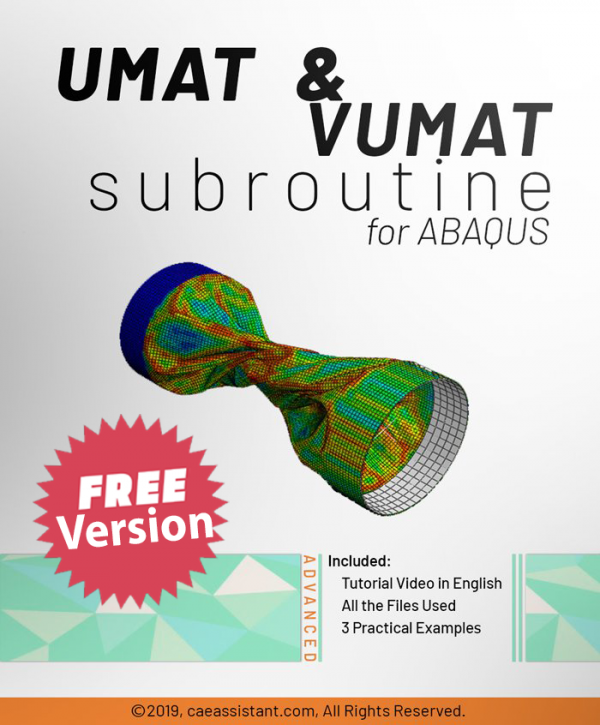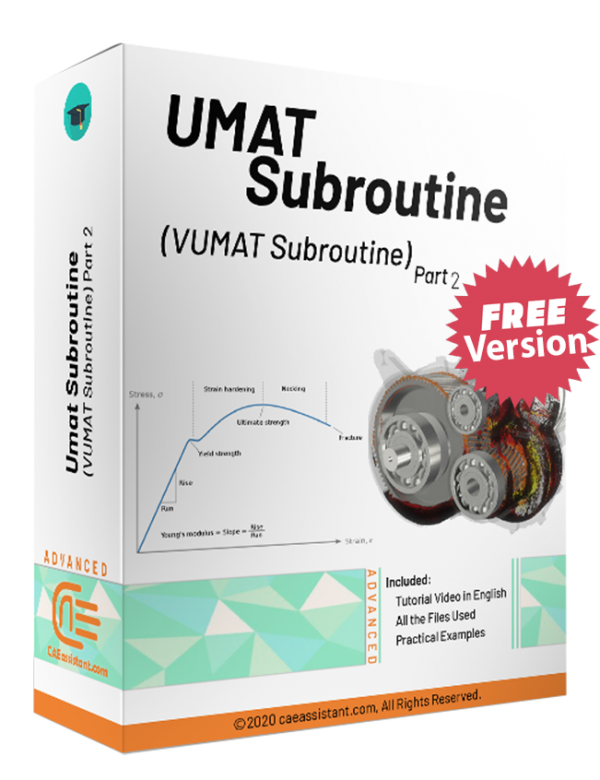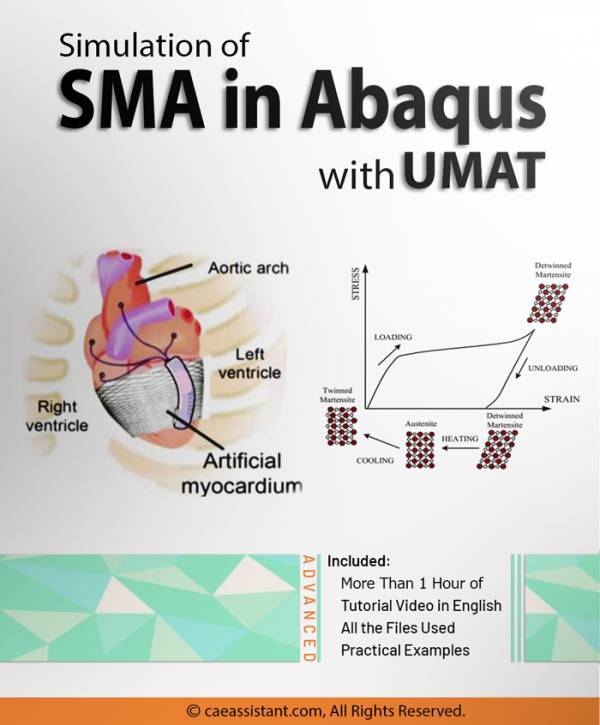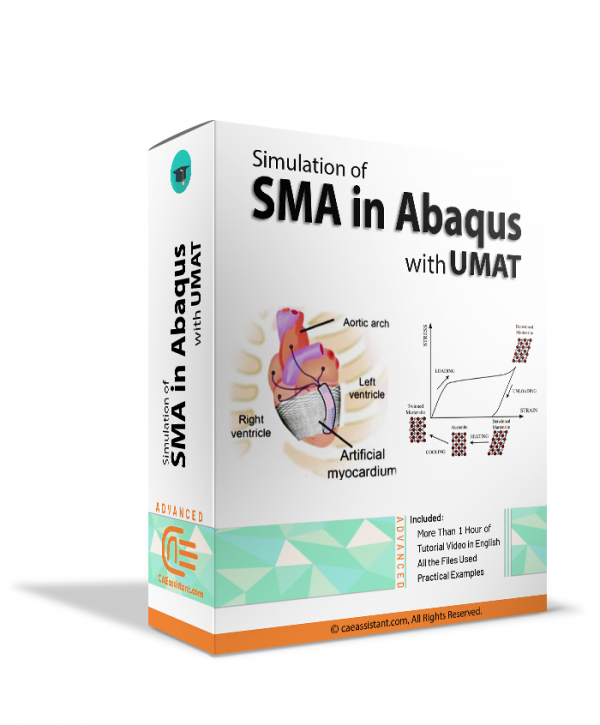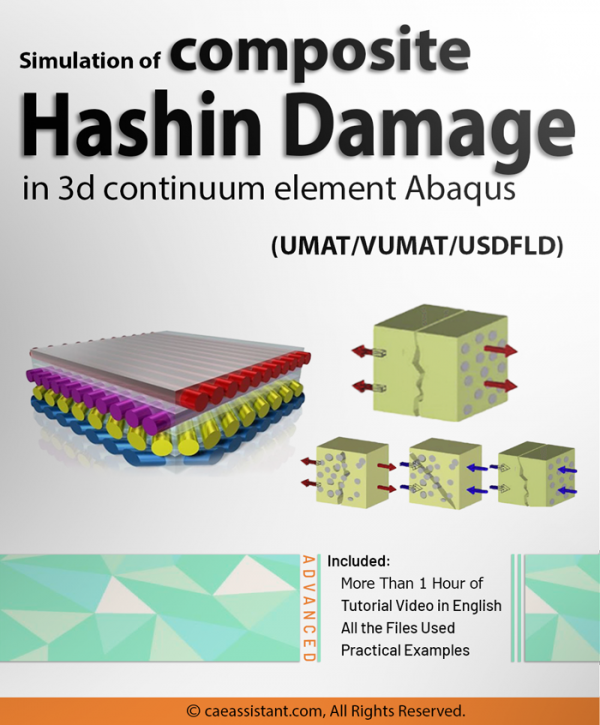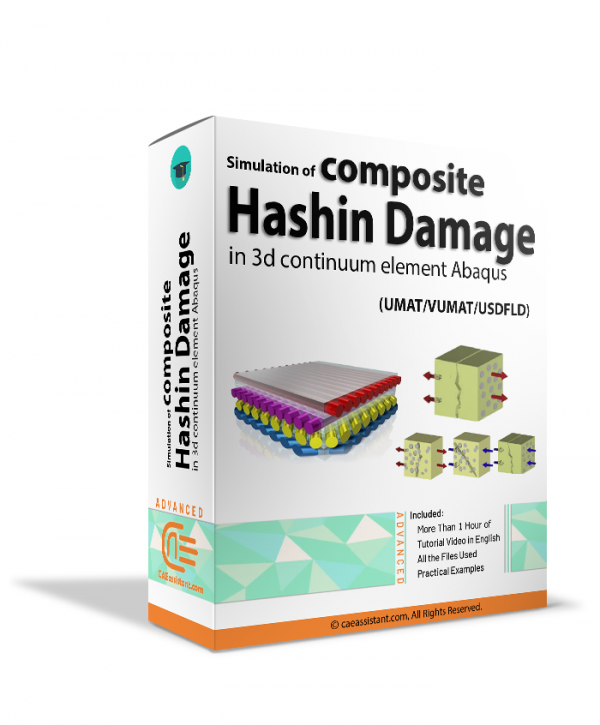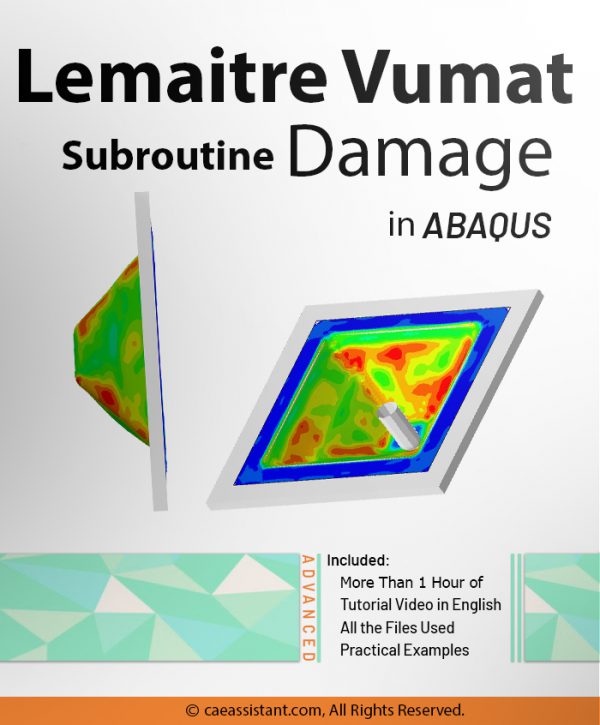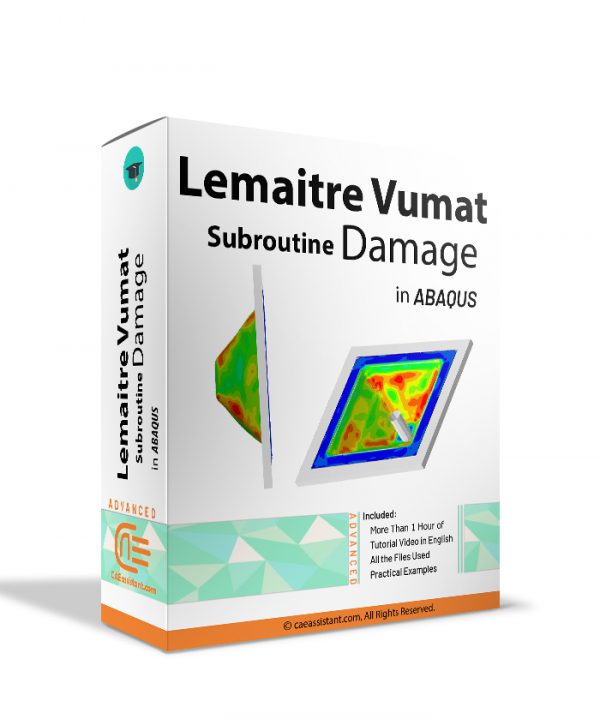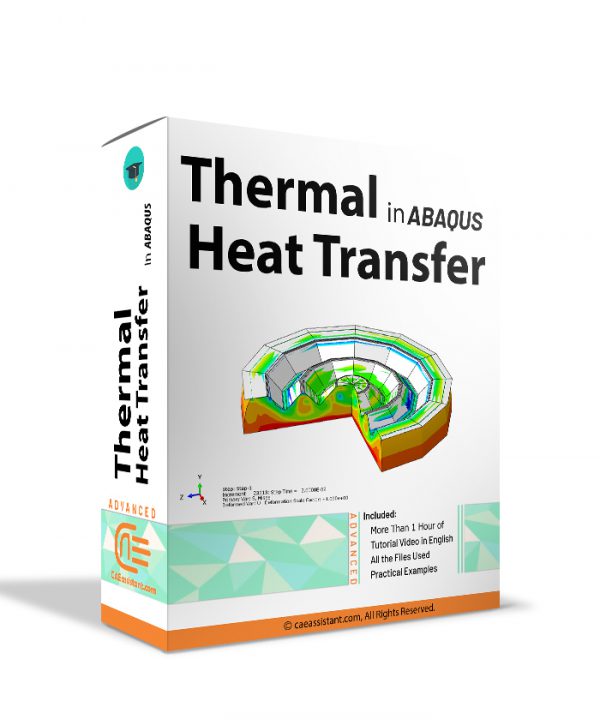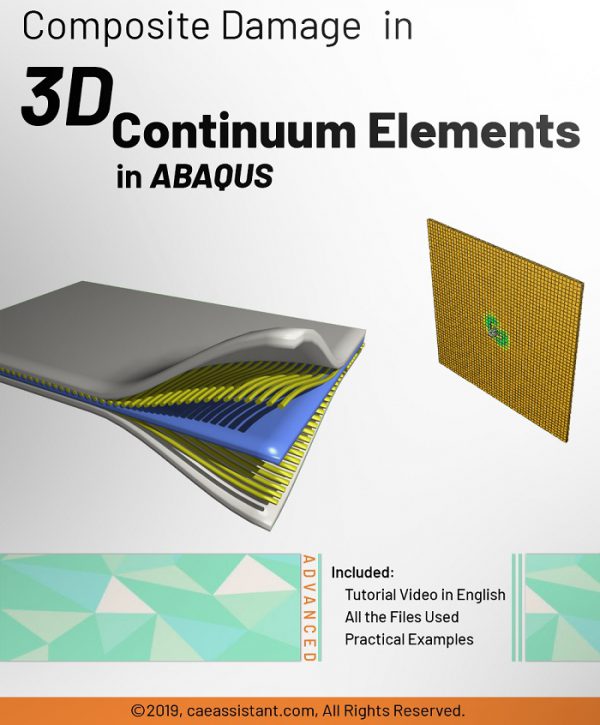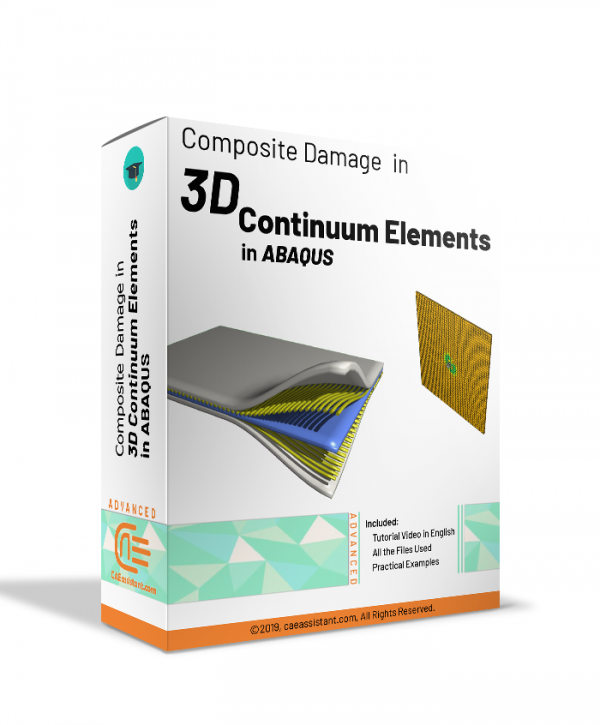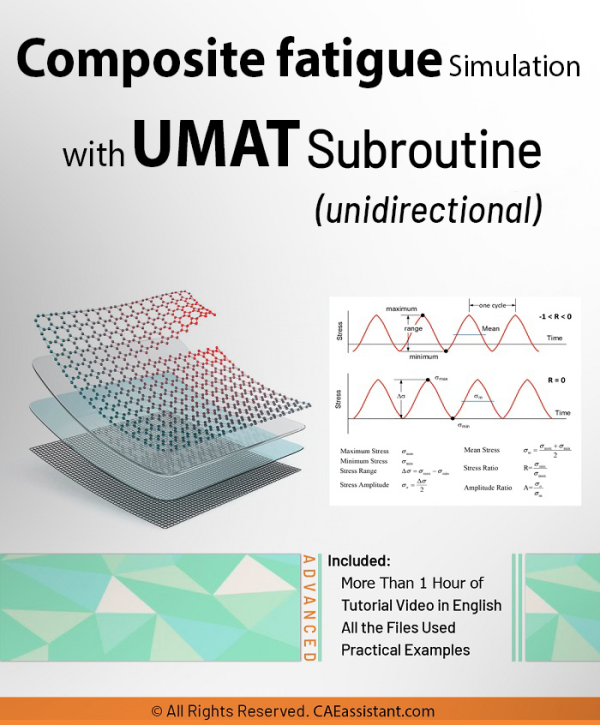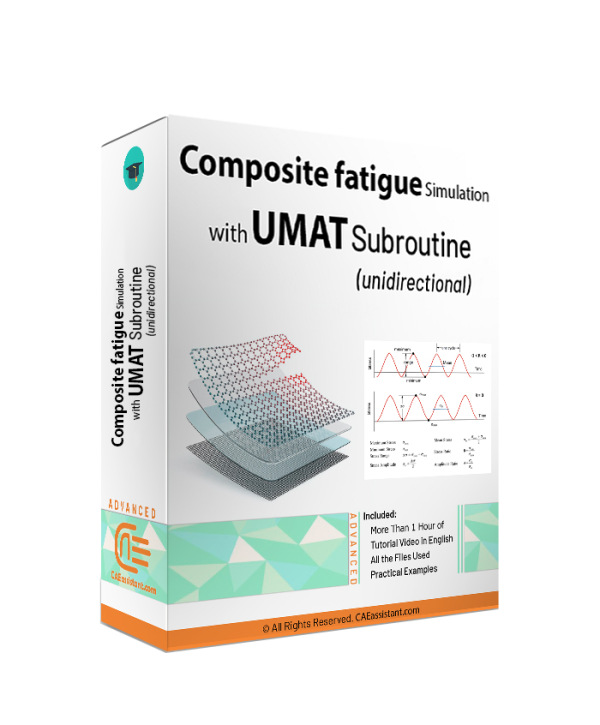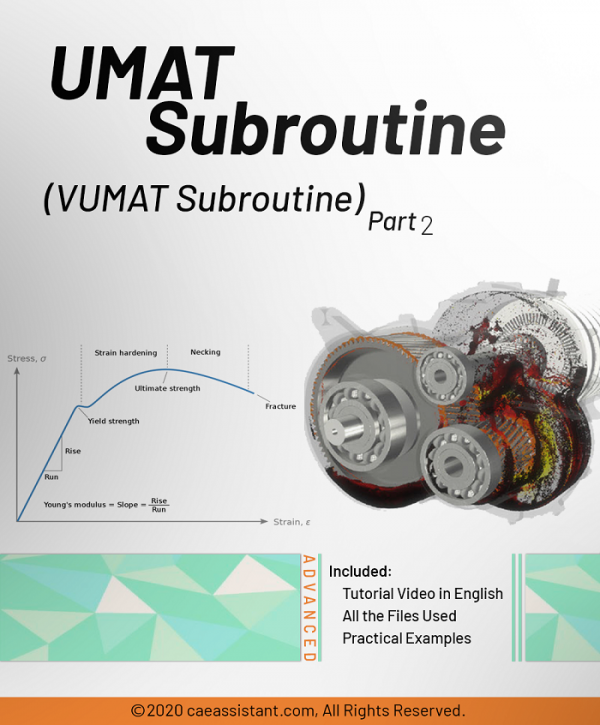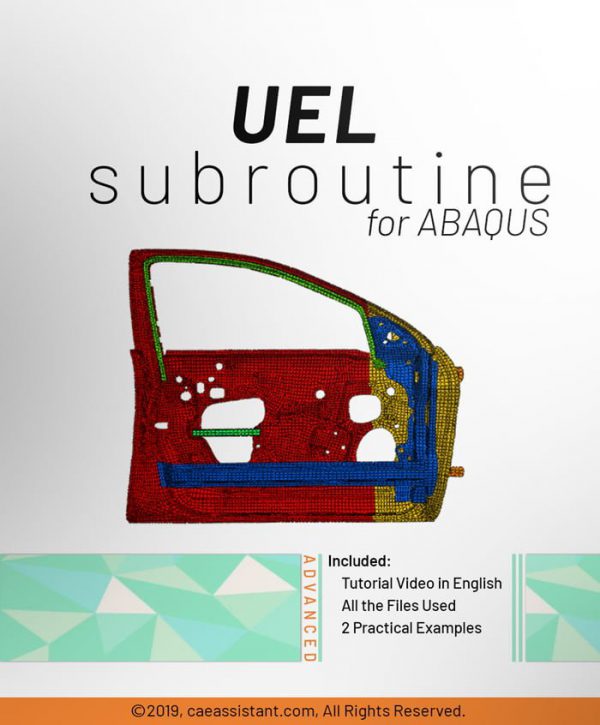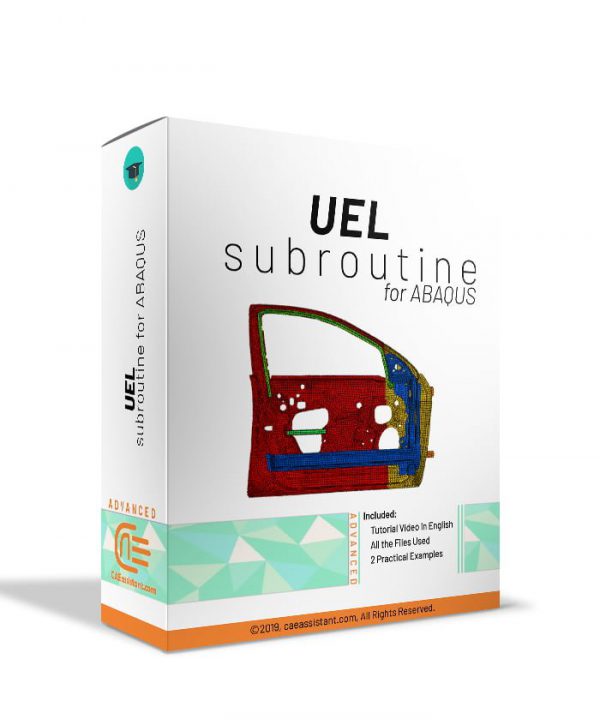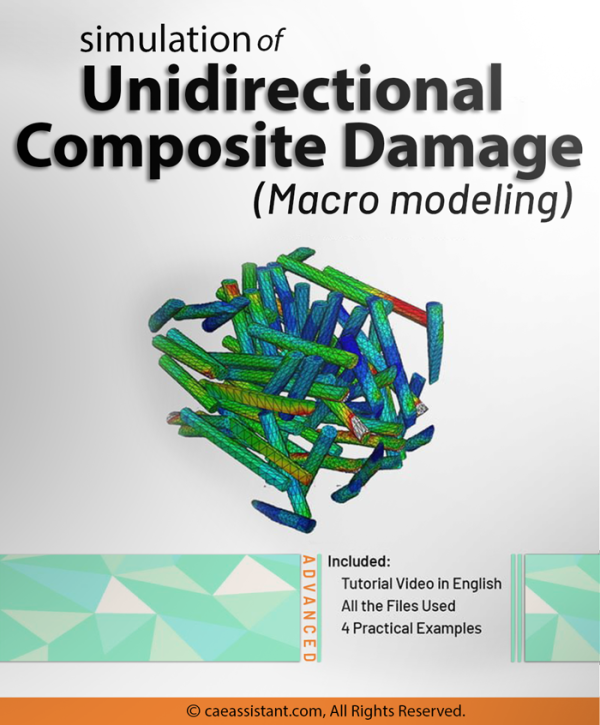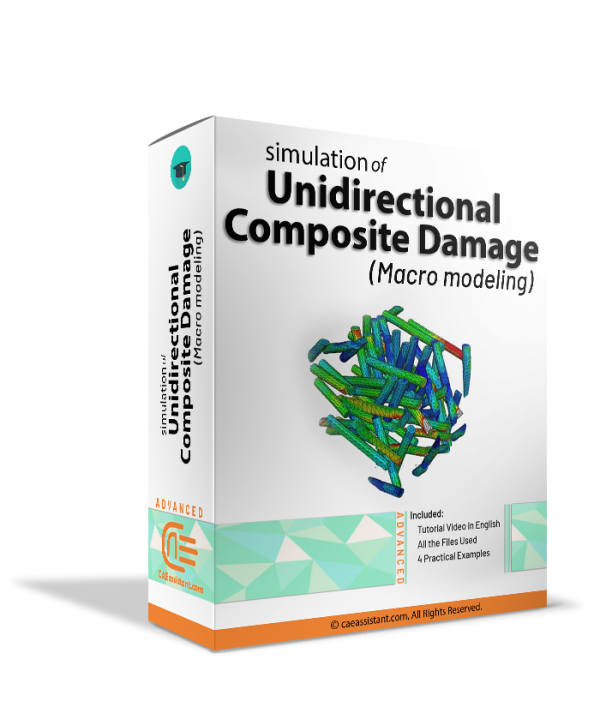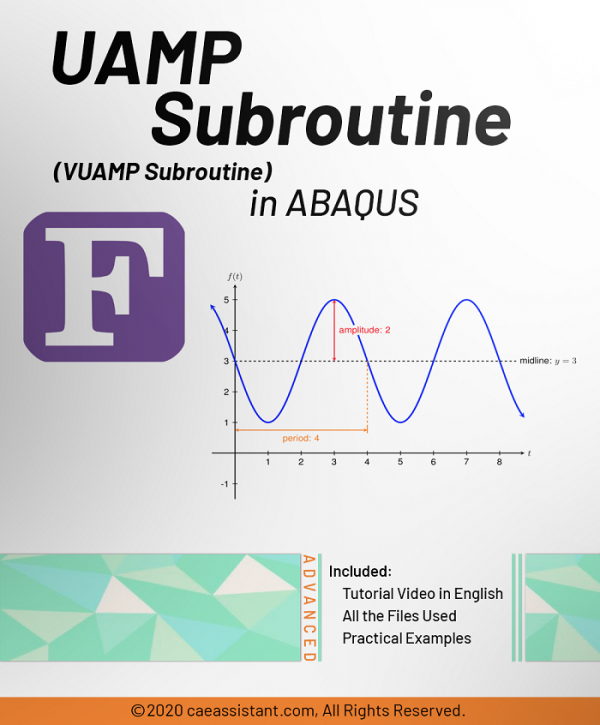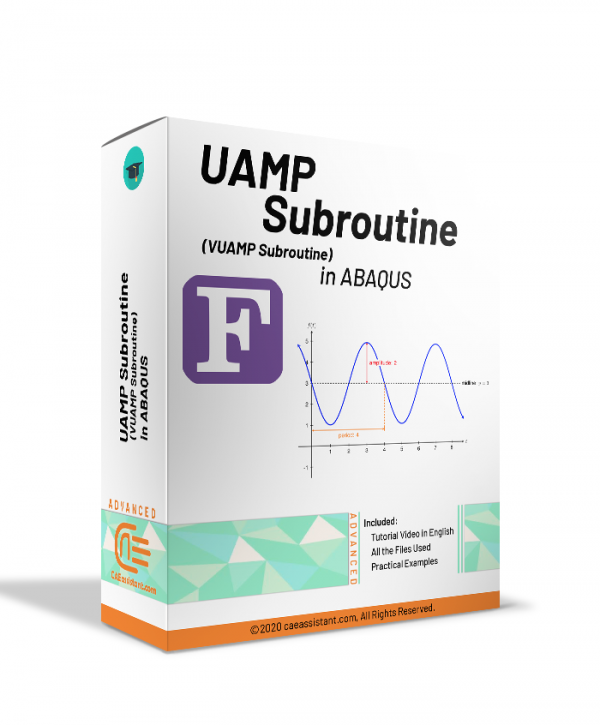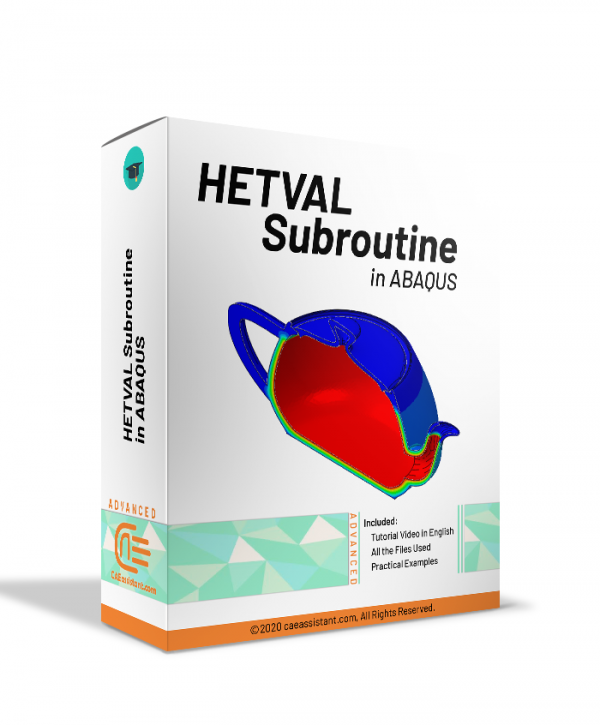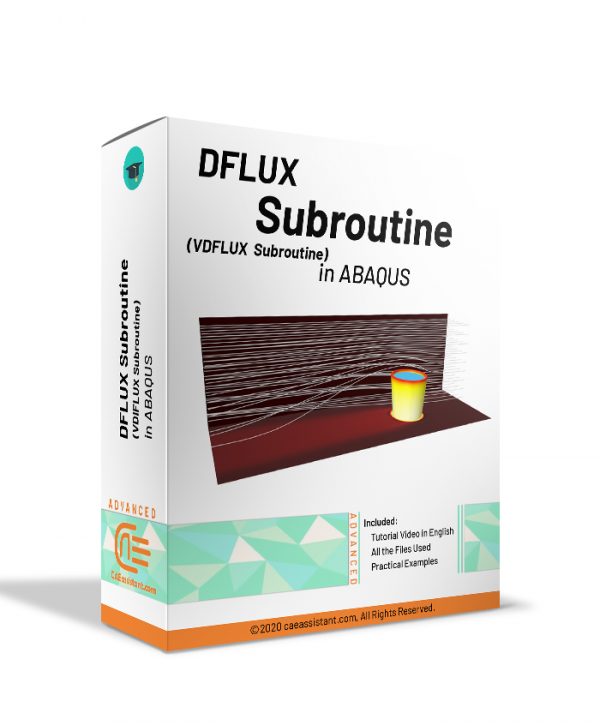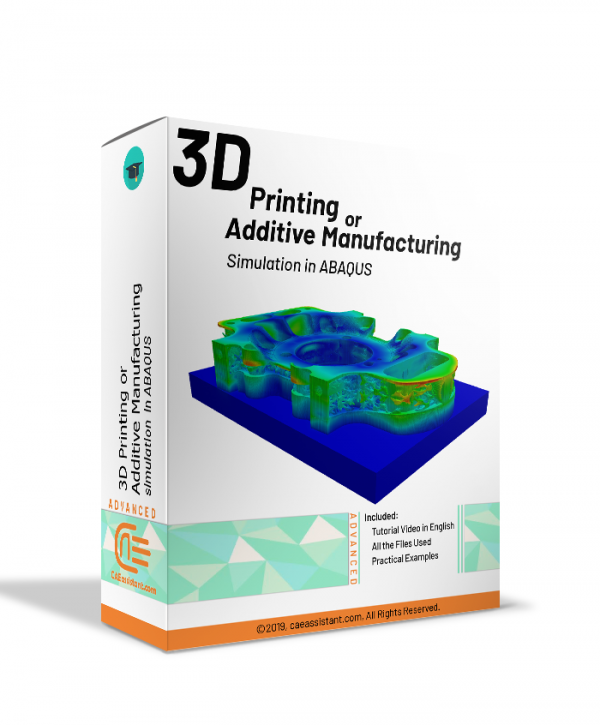Training Package
UMAT Subroutine (VUMAT Subroutine) in ABAQUS-Free Version- UMAT Abaqus example
This package includes the free version of the two following packages. The following packages include 11 workshops for writing different types of subroutines and give you instructions and points to write your own UMAT/VUMAT subroutine. Here, a UMAT Abaqus example is free to download.
"UMAT Subroutine (VUMAT Subroutine) introduction" is used when the material model is not available in ABAQUS software. If you follow this tutorial package, including standard and explicit solver, you will have the ability to write, debug and verify your subroutine based on customized material to use this in complex structures. These lectures are the introduction to writing advanced UMAT and VUMAT subroutines in hyperelastic Martials, Composites, and Metal, and so on. Watch Demo
"Advanced UMAT Subroutine (VUMAT Subroutine)" training package helps Abaqus users to prepare complex UMAT and VUMAT subroutines. This training package is suitable for those who are familiar with subroutine or want to learn UMAT/VUMAT subroutine Professionally. Equations for computational plasticity based on kinematic stiffness are also discussed. In addition, metal damage has been implemented based on Johnson Cook's model. Watch DemoSimulation of SMA in Abaqus with UMAT
Shape-memory alloys (SMAs) have the ability to recover their original shape, thanks to the shape-memory effect and superelasticity. These unique characteristics have led to the broad usage of SMAs in engineering and medical applications. Simulations offer cost-effective methods for analyzing SMAs’ behavior, ultimately enhancing their reliability and performance. Consequently, researchers frequently employ simulations to investigate SMA-based systems. This educational package begins by exploring the fundamentals of SMA wires, presenting their various types and specific capabilities. It then provides the necessary constitutive equations to describe the behavior of SMAs in simulation. The package includes a flowchart and a step-by-step guide for writing a subroutine to model SMAs in Abaqus. Users will also discover a workshop that uses Abaqus to simulate the superelasticity effect in SMA wires. This workshop not only offers guidance on the simulation and the implementation of the subroutine, but also compares the result with an analytical solution for verification.
Simulation of composite Hashin damage in 3d continuum element in Abaqus (UMAT-VUMAT-USDFLD)
In this training package, the 3D continuum HASHIN damage initiation model is prepared via three subroutines (USDFLD, UMAT and VUMAT).This training package teach you subroutines line-by-line. It should be noted that after damage initiation, failure occurs suddenly and in the form of a reduction in properties in the model. The HASHIN theory for this package is based on Kermanidis article titled” FINITE ELEMENT MODELING OF DAMAGE ACCUMULATION IN BOLTED COMPOSITE JOINTS UNDER INCREMENTAL TENSILE LOADING “.
Lemaitre Damage model implementation with VUMAT Abaqus
The Lemaitre damage model is now widely used to deal with coupled damage analyses for
various mechanical applications.
In this package, Firstly, we try to introduce the Lemaitre damage model, including damage mechanics and formulation of the Lemaitre damage model. Then, writing the Lemaitre subroutine is reached step by step. To do this job, the flowchart of the subroutine, Writing the subroutine line by line, implementation of the subroutine in one element and verification is done. In the last chapter, we implement this subroutine in a complex problem, the upsetting process.
Academic or Business Membership
Payment Yearly
Why should you choose this Membership?
Thermal Heat Transfer in Abaqus
This package is related to Thermal Analysis in Abaqus. This package helps Abaqus users to simulate professionally.
In general, Abaqus can solve the following types of heat transfer problems (For thermal and thermo-mechanical problems):
- Uncoupled heat transfer analysis
- Sequentially coupled thermal-stress analysis
- Fully coupled thermal-stress analysis
- Adiabatic analysis
3D continuum Abaqus HASHIN progressive Damage for composite materials (VUMAT Subroutine)
This tutorial teaches how to simulate damage in 3d continuum composite materials in ABAQUS. As you know, Abaqus does not have any material model for 3d composite materials. So, the user needs to write a customized subroutine to simulate damage initiation and progressive damage for composite materials in ABAQUS. In this package, one of the most practical damage initiation criteria (Hashin) is used to detect failure. It should be mentioned that this subroutine includes gradual progressive damage based on the energy method. This complex subroutine could be used for static and dynamic problems.
Composite Fatigue Simulation with UMAT Subroutine in ABAQUS (unidirectional)
The composite fatigue training package completely teaches how to simulate and analyze a fatigue composite model with the help of UMAT Subroutine in Abaqus software. In this training package, we have provided all the files needed for your training, including articles, theories, how to write subroutines, and software settings.
Advanced UMAT Subroutine (VUMAT Subroutine) – Abaqus UMAT tutorial
This training package helps Abaqus users to prepare complex UMAT and VUMAT subroutines. This Abaqus UMAT tutorial package is suitable for those who are familiar with subroutine or want to learn UMAT/VUMAT subroutine Professionally. Equations for computational plasticity based on kinematic stiffness are also discussed. In addition, metal damage has been implemented based on Johnson Cook's model.
Watch Demo
Introduction to UEL Subroutine in ABAQUS
UEL stands for User-defined Elements. When you have a finite element analysis that requires an element type that doesn't exist in the Abaqus element library, you must write a UEL subroutine. Or, when you want to define various element shape functions, the UEL would be the best choice. This subroutine is one of the most sophisticated in the Abaqus and is intended for advanced users. With this tutorial package, you can become an advanced user and learn how to write such a complex subroutine. This package contains two workshops: writing a UEL subroutine for a planar beam element with nonlinear section behavior and writing a UEL subroutine for a beam element with specific boundary conditions and loading.
Watch Demo
Simulation of Unidirectional Composite Damage in ABAQUS
This package is about Unidirectional Composite Damage tutorial and applies various theories to initiate and progress damage in composite materials based on ABAQUS capabilities for different elements. As you know, according to the modeling done by the micro or macro method, the way of defining the Abaqus composite damage completely follows the separate method in ABAQUS. This training package is customized for Abaqus composite macro modeling. There are 5 different unidirectional composite examples to help you master unidirectional composite simulations and Abaqus composite laminate damage modeling. You can see the examples in the syllabus below.
UAMP subroutine (VUAMP subroutine) in ABAQUS
This package introduces UAMP and VUAMP subroutines in Abaqus. The UAMP and VUAMP refer to User-Defined amplitude. In Abaqus, load amplitude refers to the time-varying function that defines the magnitude and pattern of a load applied to a model during analysis. This amplitude can be defined using predefined amplitude functions or by creating a user-defined amplitude using the UAMP or VUAMP subroutines. The load amplitude can be applied to various types of loads including force, pressure, displacement, and temperature, allowing for a wide range of loading scenarios to be simulated in the analysis. The load amplitude plays a critical role in determining the response of the model over time. The UAMP and VUAMP subroutines can be determined by a mathematical time-dependent function or using sensor values that are defined by the user in analysis. In Abaqus, sensors are used to monitor and extract data from a simulation during its execution. In this package, you will learn all about the UAMP and VUAMP subroutines, all of their variables, how to work with them, their differences, and other things along with educational workshops to help you understand working with these subroutines.
HETVAL subroutine in ABAQUS
HETVAL is a user subroutine specifically developed to address the limitations of Abaqus in accurately handling volumetric heat flux resulting from internal heat generation within materials. The subroutine’s functionality depends on factors such as time, temperature, or evolving state variables, stored as solution-dependent variables. Accordingly, it can tackle scenarios involving phase changes during simulations. Moreover, the subroutine allows the integration of kinetic theory to account for phase changes associated with internal heat release, such as predicting crystallization in polymer casting processes. Such a multi-functional subroutine finds applications in heat transfer analyses, coupled thermal-electric studies, or temperature-displacement analyses. In this package, our primary goal is to provide valuable insights into the HETVAL subroutine and its diverse applications. Afterward, through a series of comprehensive workshops, we will guide participants in utilizing HETVAL under various conditions. In the final workshop, a problem will be presented, allowing you to explore a realistic example and gain hands-on experience in simulating the curing process within fiber-reinforced composites using HETVAL. Furthermore, to assist those unfamiliar with fiber-reinforced composites, we have included an introductory lesson covering their applications, significance, and an explanation of the importance of accurately simulating the curing process. By completing this package, you will have gained a comprehensive understanding of utilizing HETVAL across various conditions and scenarios. Moreover, you will have acquired the ability to simulate the heat generated during the curing process of fiber-reinforced composites, demonstrating a real-world application of HETVAL.
DFLUX Subroutine (VDFLUX Subroutine) in ABAQUS
DFLUX subroutine (VDFLUX Subroutine) is used for thermal loading in various body flux and surface flux states in heat transfer and temperature displacement solvers when flux load is a function of time, place, or other parameters. In this package, you will learn “when do you need to use this subroutine?”, “how to use the DFLUX subroutine”, “what is the difference between DFLUX & VDFLUX?”, “how to convert DFLUX to VDFLUX and vice versa?”, and “How to use it in an example?”. Three workshops are presented so you can learn all these stuff in action: Simulation of welding between two plate with DFLUX subroutine, Simulation of Arc welding between two tube with DFLUX, and Simulation of different types of functional heat flux(Body-surface-Element) in plate with Johnson-cook plasticity with VDFLUX subroutine(Thermomechanical Analysis).
Additive Manufacturing or 3D Printing Abaqus simulation
3D printing is a process of creating three-dimensional objects by layering materials, such as plastic or metal, based on a digital design. 3D printing simulation involves using software to predict and optimize the printing process, allowing for more efficient and accurate production. This educational package includes two 3D printing modeling methods. The first method is based on the use of subroutines and Python scripting. After an introduction to the 3D printing process, the first method with all of its detail is explained; then, there would be two workshops for this method; the first workshop is for the 3D printing simulation of a gear with uniform cross-section and the second one is for a shaft with non-uniform cross-section. The second method uses a plug-in called AM Modeler. With this plug-in, the type of 3D printing can be selected, and after inserting the required inputs and applying some settings, the 3D printing simulation is done without any need for coding. Two main workshops will be taught to learn how to use this plug-in: "Sequential thermomechanical analysis of simple cube one-direction with LPBF 3D printing method using the trajectory-based method with AM plug-in" and "3D printing simulation with Fusion deposition modeling and Laser direct energy deposition method with AM plug-in".
